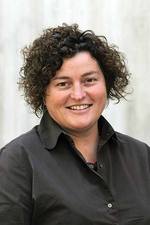What is health literacy?
 Commentary Commentary
Following one of the recommendations of Adelaide Thinker in Residence Professor Ilona Kickbusch, the Healthy Ageing Research Cluster (HARC) has been involved in the establishment of a new initiative called the Health Literacy Alliance. Susan Gravier, Co-ordinator of HARC at the University of Adelaide, explains what health literacy is, and how the Health Literacy Alliance aims to help our society. Health Literacy is not just knowing how to read but knowing how to navigate through life, keeping health in mind and in practice. It's knowing about the body's functions and signs of dysfunction; knowing how to find, interpret and understand information, and how and where to seek further information when required; knowing what constitutes good quality advice, and how to translate this help into action. Health literacy also influences the nature and functioning of environments so that they encourage health and wellbeing. It's about thinking and acting in a healthy way for ourselves or as a community, even when the focus may seem far from health, for example in fashion, transport, or advertising. The Healthy Ageing Research Cluster (HARC) has been an active representative of the University of Adelaide in the Adelaide-Thinker-in-Residence Program of Professor Ilona Kickbusch. Professor Kickbusch is well known throughout the world in the Public Health sphere, has had a distinguished career with the World Health Organization and initiated the Ottawa Charter for Health Promotion. The Health Literacy Alliance sprung from a recommendation at the end of Professor Kickbusch's first residency in February-March this year. This alliance is a diverse group of 36 members from the three South Australian universities, the Spencer Gulf Rural Health School, the Department of Health, various health services, Department of Education and Children's Services, State Library of South Australia, CSIRO, Divisions of General Practice, Aboriginal Health Council SA, SA Refugee Network, TRACsa (Trauma and Injury Recovery) and WorkCover. The purpose of the alliance is to provide leadership and support for developing and applying the concept of health literacy as a means of equitably improving health and wellbeing. Health literacy describes the ability of an individual to make decisions and act in favour of their health in daily life - at home, in the community, at school, in the workplace, in the healthcare system, in the marketplace or in the political arena. Being health literate empowers people to increase control over their health, their ability to seek out health information, to navigate complex systems, to take responsibility and participate effectively in all aspects of life. Our social environment is forever changing around us. Information relating directly or indirectly to health and wellbeing comes to us and at us from a variety of mediums: media, marketing, and virtual, and in a variety of settings. Health systems are more complex than ever before, with more treatment options, specialised services and a growing delegation of risk management to the individual, the family and the community. Underlying how people function in these environments are competencies - cognitive, motivational, and social - geared towards a health-related outcome. Being health literate equates to being health competent. Poor health literacy comes at a cost to the individual and to the community through higher healthcare costs. In America in 2001, low functional literacy resulted in an estimated $32 to $48 billion in additional healthcare costs. In 2004, the US Institute of Medicine noted that "health literacy remains a final neglected pathway to high-quality health care". We don't know yet how much health literacy affects South Australians' health and wellbeing, or the cost of poor health literacy in SA. The Health Literacy Alliance seeks to survey and monitor the level of health literacy in South Australia to therefore found the basis for appropriate changes. It also endeavours to advocate strongly so that health literacy is no longer the "neglected pathway to high-quality health care" but the basis for sound practice. So how does health literacy come into the realm of fashion? By advocating for the portrayal of the image of healthy weight, and that healthy weight is a state of being rather than a set of measurements. Fashionable trends such as body piercing, an invasive procedure, can cause injury or infections which can be avoided if potential candidates are health literate. So how does health literacy come into the realm of transport? Choices of how we move about our community and how our community is set up involve health - ease of walking about neighbourhoods, fitness, effects of pollution, personal safety, stress... Health literacy is not a magic wand. It is, however, a powerful tool. It's not about being an expert on health but it's being competent to search for and find (with appropriate help) good, relevant and timely information from a variety of sources within an environment which promotes health and wellbeing.
|





